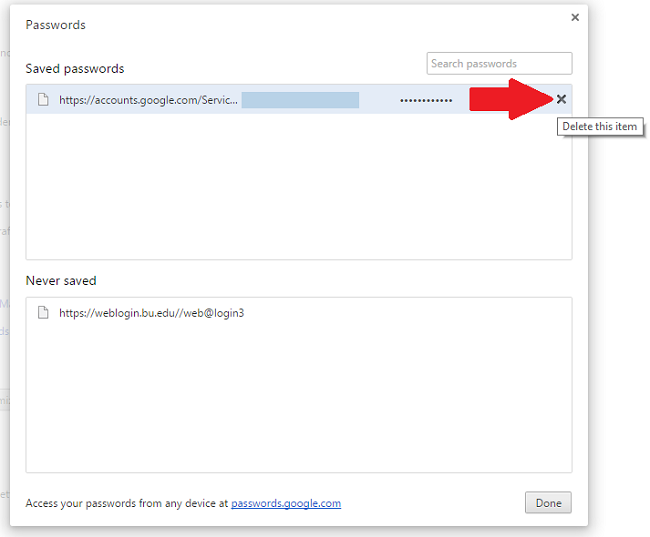

When you visit this link, Google will show you all the login details for every account you've stored with Chrome. Near the top of the password manager settings page in Chrome, you'll see the sentence "View and manage saved passwords in your Google Account." You can click the words "Google Account" to go to. Your Chrome Passwords Can Be Viewed Online All they need is the website you visit and your username, and they have a "skeleton key" that unlocks any account you may have. There is no way to export all the passwords at once, so an intruder will only manage to note down a handful of passwords however, they'll likely use the time to target sensitive accounts such as bank login information.Īlso, if you re-use passwords a lot, the intruder can use this bad habit to crack open your other accounts without needing to see every password.

Without a login code, someone can sign in to your profile, boot up Chrome, and look at all the password they want without any security checks. Remember how Chrome's password manager asks for the password or PIN you use to log on? Things get a little worrying if you don't use a login code at all. It's worth taking these into account so you can protect your passwords-that is, if you still want to keep Chrome's password manager after you learn about the negatives! There's No Additional Protection If You Don't Use a Password Unfortunately, the Google Chrome password manager does have its downsides. If you need to remember a password (for example, if autofill doesn't do its job), you can use the manager to remind yourself what the password is. It syncs your password between your devices and automatically fills in forms on any PC you need to sign in. Using Chrome Password Manager is very convenient. The Downsides of Google Chrome's Password Manager


 0 kommentar(er)
0 kommentar(er)
